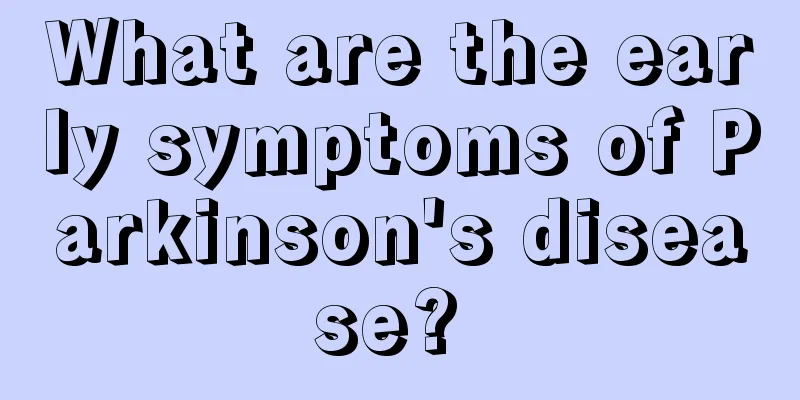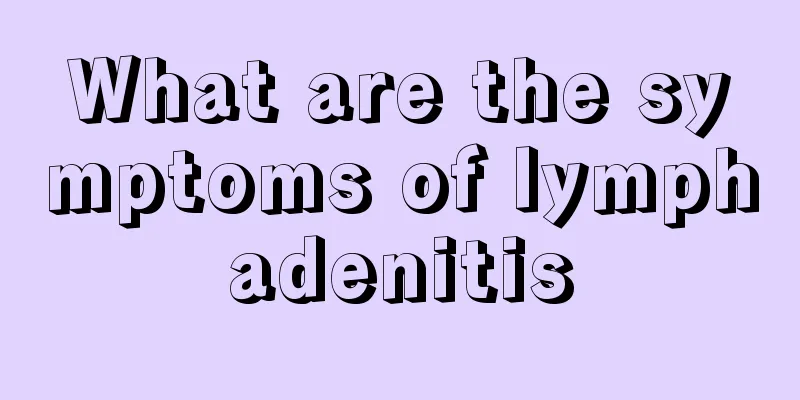What are the early symptoms of Parkinson's disease?

|
Parkinson's disease is a common disease in daily life, which often occurs in middle-aged and elderly people. It has a great impact on people's normal life and work. Therefore, understanding the early symptoms of Parkinson's disease and achieving early detection and early treatment are very beneficial for treatment. So what are the early symptoms of Parkinson's disease? Most people don't quite understand this. In fact, Parkinson's disease has four early symptoms. The first early symptom is resting tremor. 1. Resting tremor. Tremor is often the earliest symptom of the disease, usually with unilateral finger pill-rolling movements, which will later develop into involuntary rhythmic tremors of the ipsilateral lower limb and the contralateral limb when at rest. The symptoms may be alleviated or stop when changing position or moving. Tremors can worsen with emotional changes. 2. Muscle stiffness. In the early stage, it usually starts from one side of the limb, and the patient feels joint stiffness and muscle tightness. When the facial muscles are affected, a "mask face" with a stiff expression will appear; when it affects the flexion of the trunk, limbs and knee joints, a "triple-bend posture" will occur. 3. Slow movements. In the early stages, patients' fine motor skills in their upper limbs slow down. Actions such as tying shoelaces and buttoning clothes become much slower than before, or even impossible to complete successfully. Writing also gradually becomes difficult, the handwriting becomes crooked, and the writing becomes smaller and smaller, which is called "micrographia". It is difficult to start walking. Once you start walking, your body leans forward, your steps are small and get faster and faster, and you cannot stop in time, which is called a "panicked gait." When walking, the coordinated swing of the upper limb on the affected side is reduced or even disappears; turning around is difficult and requires taking several small steps in succession. 4. Combined with other symptoms. Sometimes patients also experience symptoms such as decreased speech and a deep, monotonous voice, difficulty swallowing, drooling, sleep disorders, depression, or dementia. |
<<: What kind of disease is Parkinson's?
>>: What causes nausea and vomiting?
Recommend
What are the high-risk factors for rectal cancer? What are the symptoms of mid- to late-stage rectal cancer?
Most people know that rectal cancer is a relative...
What can I use to wash off butter
In daily life, butter is not unfamiliar to many p...
Is there any relationship between liver cancer and hepatitis? Yes, viral infection can lead to hepatitis
There is a very close relationship between liver ...
The process of untying the ligature
Sterilization is a very common method of contrace...
What causes weak legs
For those who do not exercise enough on a daily b...
Is sloping shoulders hereditary?
Sloping shoulders means that the shoulders cannot...
Is it harmful to eat Himalayan salt?
Salt is a substance necessary for the human body....
How to treat uremia and hyperphosphatemia?
Many patients with uremia will develop hyperphosp...
What causes cervical calcification
Cervical calcification is closely related to agin...
Why do I suddenly feel dizzy and nauseous
In daily life, we don’t pay much attention to the...
Can lymphoma tumors be contagious after they rupture?
Will lymphoma be contagious after it ruptures? Th...
What are the tips for removing acne from oily skin
Female friends are reluctant to go out after they...
What harm does Coke do to the stomach
Many teenagers are addicted to cola. Although col...
The efficacy and function of Arbutin
More and more people are beginning to like eating...
What is microcrystalline stone
There are many new materials for home decoration ...









